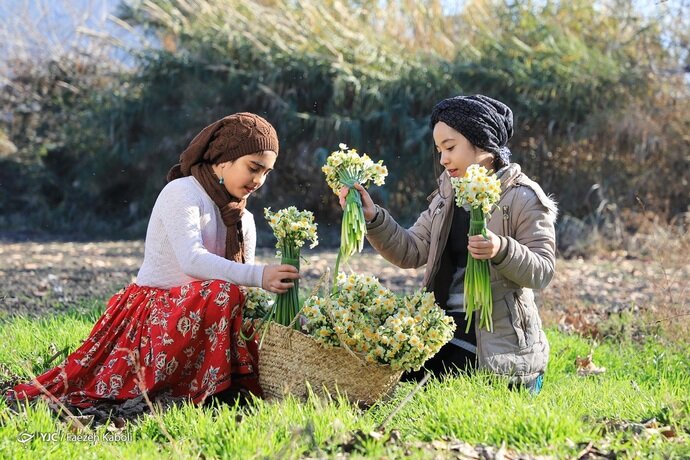Daffodil gardens of Kazerun made national heritage

TEHRAN – Iran’s Ministry of Cultural Heritage, Tourism, and Handicrafts has recently registered several daffodil gardens as national heritage.
A selection of organic daffodil gardens, which are situated in the rural districts of Jereh, Baladeh, and Bolbolak in Kazerun county of Fars province, have collectively been registered as national heritage, Mehr quoted Kazerun’s tourism chief Mohammadjavad Joukari as saying on Monday.
In Persian culture and literature, the daffodil symbolizes the eye, usually the eye of the beloved. In poetry, the beloved is likened to the daffodil because of its leafless and green stem, which is hollowed out, straw-like, and curved, which is associated with humility and dignity.
The daffodil is a perennial and grows to about 41 cm in height. Each plant features five or six linear leaves that grow from the bulb and are about 30 cm long. The stem bears one large yellow blossom with a corolla deeply cleft into six lobes and a central bell-shaped crown, or corona, that is frilled at its edges. This trumpet shape contains the stamens and is the flower’s most conspicuous feature.
Flowers have also thrived into the Persian language. Many girls are named after flowers: Ra’na (Blanket Flowers), Shaghayegh (Anemone), Banafsheh (Violet), Yaasaman (Jasmine), Niloofar (Lotus flower), Nastaran (Eglantine), Laleh (Tulip), Narges (Daffodil), etc.
The ancient region of Fars also spelled Pars, or Persis was the heart of the Achaemenid Empire (550–330 BC), which was founded by Cyrus the Great and had its capital at Pasargadae. Darius I the Great moved the capital to nearby Persepolis in the late 6th or early 5th century BC.
The capital city of Shiraz is home to some of the country’s most magnificent buildings and sights. Increasingly, it draws more and more foreign and domestic sightseers flocking into this provincial capital which was the literary capital of Persia during the Zand dynasty from 1751 to 1794.
AFM
